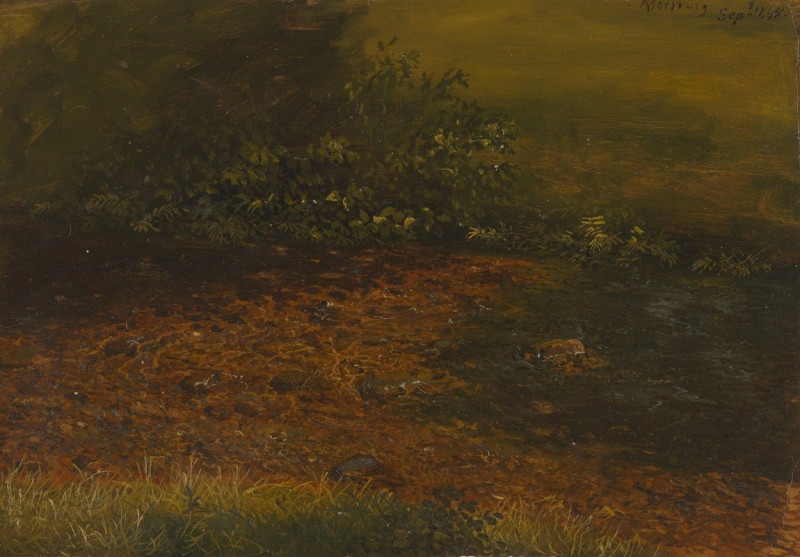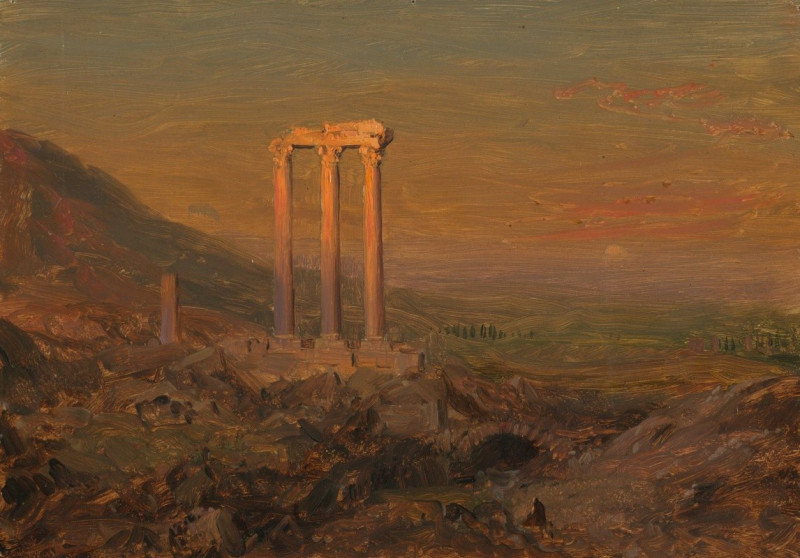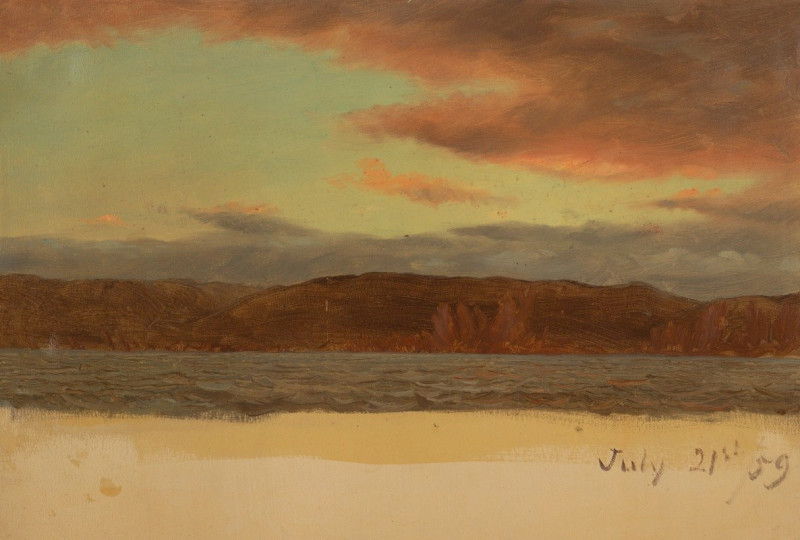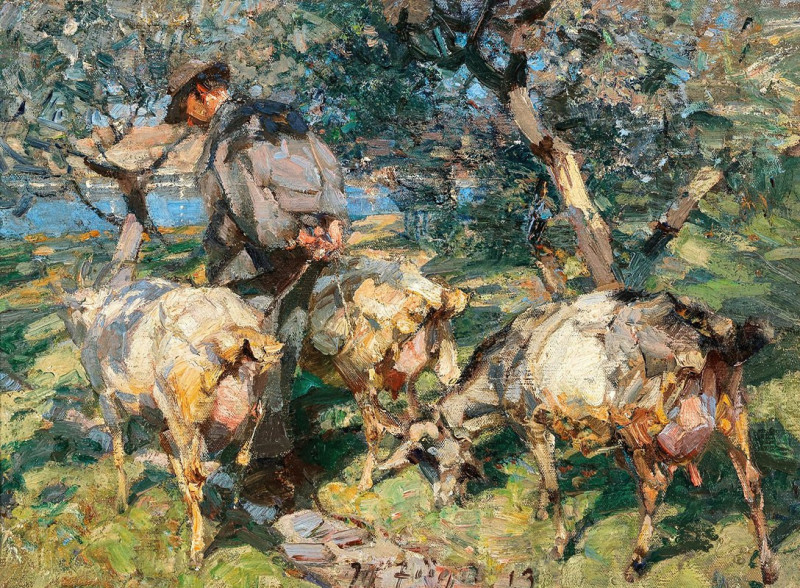Study for ‘Apotheosis to Thomas Cole’ (ca. 1847)
Technique: Giclée quality print
Recommended by our customers
More about this artwork
Frederic Edwin Church's "Study for ‘Apotheosis to Thomas Cole’" (ca. 1847) offers a profound window into nineteenth-century American landscape painting. This evocative study illuminates Church’s mastery in using light and natural form to weave narratives that transcend mere visual representation, making it a notable piece in the study of American art.In this painting, viewers are drawn into a dramatic landscape that conveys both earthly and celestial sensations. At the center, a mesmerizing pool of water reflects a radiant cross, suggesting a spiritual reverence. The painting divides into a dark, rugged terrain on the left, symbolic perhaps of the earthly or mortal struggles, contrasting with the luminescent and ethereal right side where light filters through a dense canopy to illuminate the scene, hinting at the divine or immortal aspect. A group of figures can be observed near the water’s edge, possibly pilgrims or wanderers, deeply engaged in this sanctified natural environment. They seem small and humble within the vast, mysterious wilderness around them, which adds to the painting's theme of human insignificance in contrast to the sublime nature.Above all, this artwork is a tribute to Thomas Cole, Church's mentor and the founder of the Hudson River School, which emphasized romantic landscapes imbued with moral and spiritual meanings. In creating "Study for ‘Apotheosis to Thomas Cole’," Church not only honors his predecessor but also expands on the artistic vision, showing his capability for emotional depth and atmospheric grandeur.
Delivery
Returns
Frederic Edwin Church (May 4, 1826 – April 7, 1900) was an American landscape painter born in Hartford, Connecticut. He was a central figure in the Hudson River School of American landscape painters, best known for painting large landscapes, often depicting mountains, waterfalls, and sunsets. Church's paintings put an emphasis on realistic detail, dramatic light, and panoramic views. He debuted some of his major works in single-painting exhibitions to a paying and often enthralled audience in New York City. In his prime, he was one of the most famous painters in the United States.














































